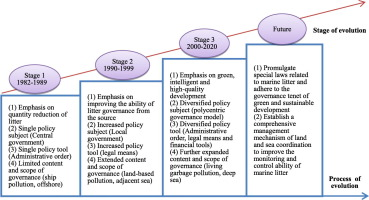
PROBLEMS
Researchers at The University of Western Australia have found that although the Indian Ocean is the world's biggest dumping ground for plastic waste, nobody seems to know where it goes.
1. In a research paper published in the Journal of Geophysical Research: Oceans, researchers used information gathered from more than 22,000 satellite tracked surface drifting buoys that had been released around all the world's oceans since 1979, to simulate pathways of plastic waste globally with an emphasis on the Indian Ocean.Professor Pattiaratchi said every year, up to 15 million tonnes of plastic waste was estimated to make its way into the ocean through coastlines and rivers."This amount is expected to double by 2025," he said.
2. "Some of this waste sinks in the ocean, some is washed up on beaches and some floats on the ocean surface, transported by the ocean currents. As plastic materials are extremely durable, floating plastic waste can travel great distances in the ocean."Professor Pattiaratchi said some floating plastics were known to collect in the centre of subtropical gyres (large systems of circulating ocean currents) in 'garbage patches'."Here, the ocean currents converge at the centre of the gyre and sink," he said. "However, the floating plastic material remains at the ocean surface, allowing it to concentrate in these regions."it is estimated that only one per cent of all plastic waste that enters the ocean is trapped in the garbage patches.
3. Lead author, Mirjam van der Mheen who is undertaking the research as part of her UWA Ph.D. said the research team found that unique characteristics of the southern Indian Ocean transport floating plastics towards the western side of the ocean, where it leaks past South Africa into the South Atlantic Ocean."Because of the Asian monsoon system, the southeast trade winds in the southern Indian Ocean are stronger than the trade winds in the Pacific and Atlantic Oceans," she said."These strong winds push floating plastic material further to the west in the southern Indian Ocean than they do in the other oceans."In the northern Indian Ocean our simulations showed that there may be an accumulation in the Bay of Bengal. It is also most likely that floating plastics will ultimately end up on beaches, transported by the reversing monsoon winds and currents."Our study shows that the atmospheric and oceanic attributes of the Indian Ocean are different to other ocean basins and that there may not be a concentrated garbage patch.
CHINESE MEASURES



ADAPTION
China is the world’s biggest plastic producer and consumer in the past 10 years. In 2008, China banned free plastic bags, effectively reducing their use in retailing. However, the rapid expansion of e-commerce, express, and food delivery industries has brought about new challenges. Notably, the disposable plastic packages used by e-commerce, express delivery, and food delivery are not subjected to the ‘plastic limit order’ released in 2008, which can be considered a grey area of law and regulation. So, compared with the abolished ones, the series of laws and regulations were unprecedented in 2020 have the following characteristics.
-
Higher administrative and legal effectiveness. A series of laws, regulations, bans, rules and notes have been jointly released by China’s highest legislature-the national people’s congress, China’s highest planning body, the National Development and Reform Commission (NDRC), and other closely related states administrative functional departments, such as the Ministry of Ecology and Environment, the State Administration for Market Regulation. From the perspective of legislation, China has promised rules on plastic products and an accelerated switch to less plastic pollution.
-
More single-use and non-degradable plastic products are included. In China’s 2008 restriction on ultra-thin plastic bags, only the bags thinner than 0.025 mm are banned. The new plan imposes comprehensive restrictions on other single-use, non-degradable plastic products, except for single-use plastic bags. The new measures detailed and carried out in the phased plan focus on the highly visible waste packaging generated by the rise of online retail and the popularity of takeaway food, which have been fast-growing industries in China since 2010. Now, single-use plastic straws are vanishing in China as the first phase of the country’s most stringent plastic ban takes effect in dine-in catering services.
-
More challenging but feasible plan. The phased plan with step-by-step timelines to ban and significantly reduce plastic use in the next 5 years is not only ambitious but feasible for China as the world’s biggest plastic producer and consumer. In 2019, China produced more than 80 million tons of plastic products, while the lack of recycling and reuse has been a persistent social and environmental challenge. Given that China is already working to tackle plastic pollution, there is also a great challenge to address this persistent social and environmental problem in a short period. However, the new plan to ban single-use and non-degradable plastics, such as shopping bags and straws in online retail and takeaway food industries has promised rules on plastic products that are comprehensive and detailed, as well as more bans, and an accelerated switch to fewer polluting materials in China.